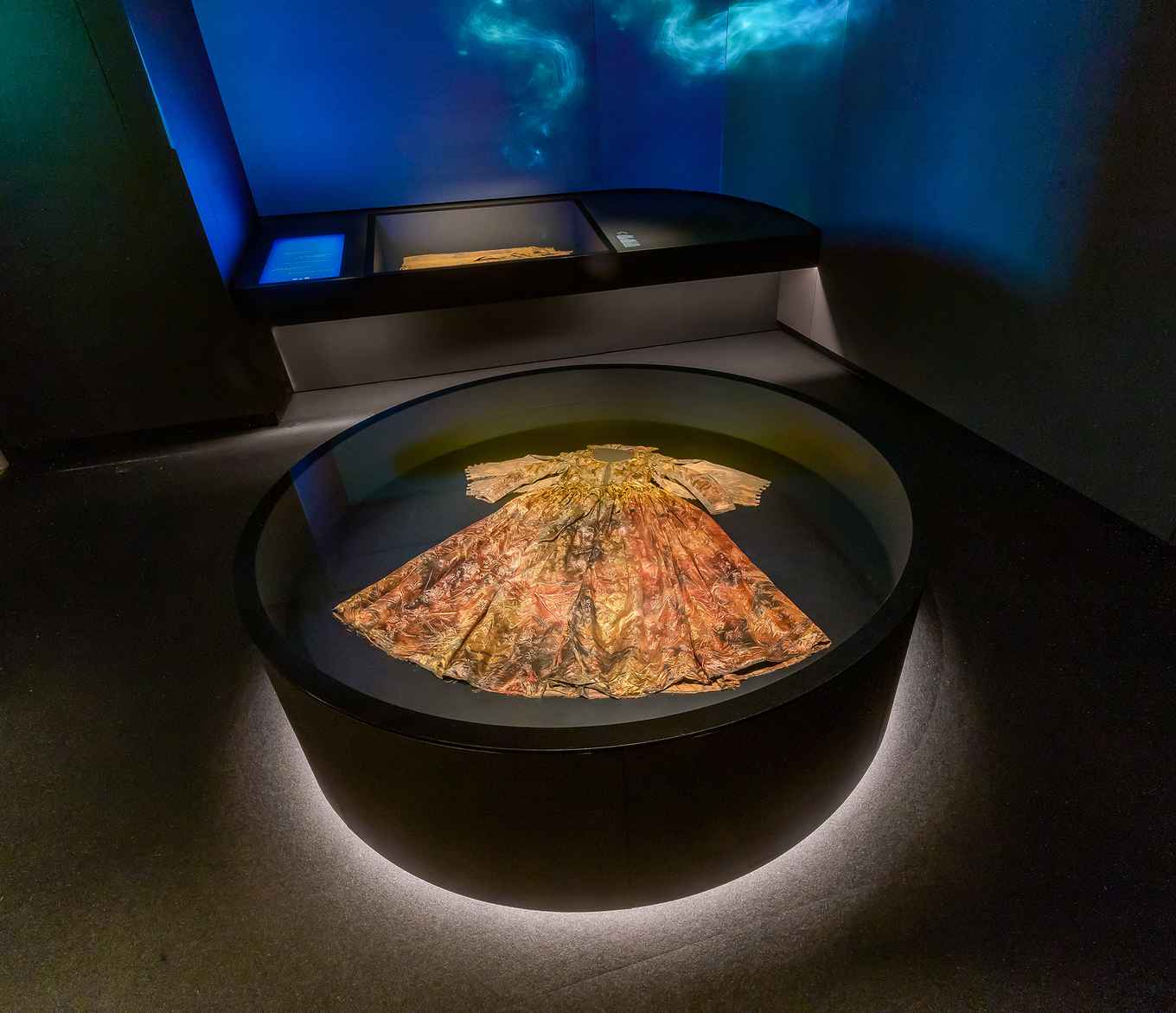Innovator of the year award for museum case displaying textiles from 17th century shipwreck
8 June 2023

Van Bommel led research into the long-term preservation of archaeological maritime silk textiles following the find of a large collection of archaeological silk fragments among the debris of the shipwreck that sank in the mid-17th century, in the Wadden Sea, The Netherlands. The find comprises some 300 textile fragments representing a unique example of undisturbed 17th-century fashion. Part of this collection, including an intact satin silk damask dress, is now on display at the museum Kaap Skil in Texel.
The display cases were built by the Belgian company Meyvaert based on Van Bommels research, carried out in cooperation with researchers at the Cultural Heritage Agency of the Netherlands (RCE). In 2020 they published their findings in the Journal of Cultural Heritage, concluding that the textiles would require an oxygen-free and climate controlled environment to survive. No suitable display cases existed, so the Kaap Skil museum turned to Meyvaert to develop a solution to accommodate these fragile materials. The company worked together with the museum and the researchers in developing and installing the innovative controlled-atmosphere cases that were awarded the Innovator of the Year award by Museums + Heritage, a British events and publishing company active in the world of museums, heritage and cultural attractions.
Reference
Ana Serrano, Agnes Brokerhof, Bart Ankersmit, Maarten van Bommel: From the bottom of the sea to the display case: A study into the long-term preservation of archaeological maritime silk textiles in controlled atmosphere. Journal of Cultural Heritage, Volume 45, September–October 2020, Pages 91-100. DOI: 10.1016/j.culher.2020.04.004.